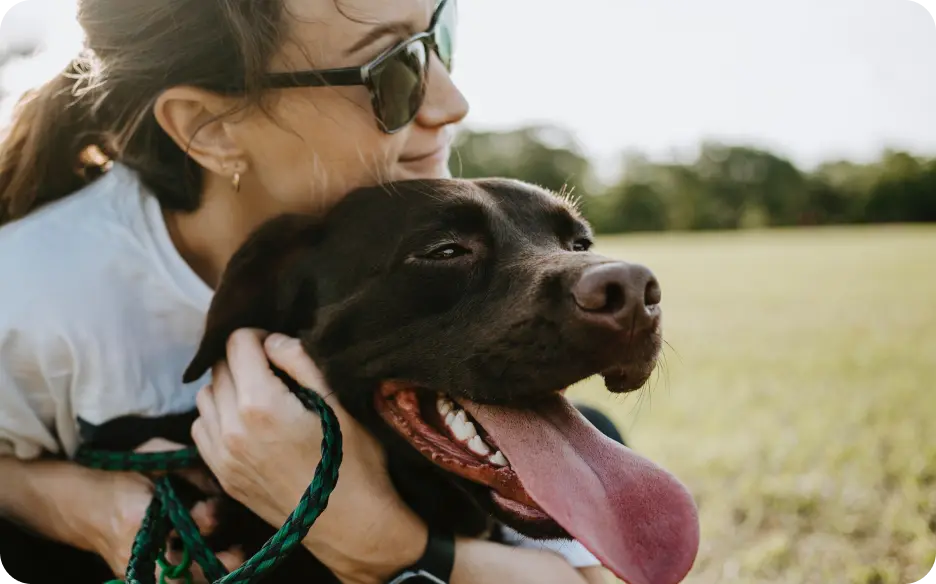Watching a dog shake its toy can be both amusing and puzzling. Many dog owners wonder why their furry friends engage in this behavior. A dog picks up a toy, shakes it vigorously, and sometimes even growls or barks while doing so. This behavior may seem strange, but it has its roots in a dog’s instincts and social behaviors. Knowing why dogs shake their toys can help you appreciate this playful action and deepen your bond with your pet.
Instinctual Roots of Toy-Shaking
The act of shaking a toy is often linked to a dog’s natural instincts. Dogs are descendants of wolves, and many behaviors still reflect those primal roots. In the wild, wolves hunted for food, and shaking their prey was a method to immobilize or kill it. This motion mimics a wolf capturing its prey, which is why many dogs exhibit this behavior with their toys. When your dog shakes a toy, it may be reenacting a hunting scenario, channeling its instinctual drive to capture and assert dominance over its “prey.”
Playfulness and Excitement
Shaking a toy can also be a way for dogs to express excitement and playfulness. Highly social animals, dogs engage in play as a critical part of their interactions. When a dog shakes a toy, it often signifies enjoyment and full engagement in the moment. This playful behavior builds confidence and reinforces natural instincts in a safe environment.
Curiosity and Exploration
Another reason dogs shake their toys is to explore them. Dogs are naturally curious creatures that use their mouths to investigate objects. Shaking a toy helps them understand its texture, weight, and sound. This sensory engagement is vital for a dog’s development, especially in puppies. Through shaking, they learn about their environment while having fun.
Releasing Energy and Stress
Dogs, like humans, can experience stress and anxiety. Shaking a toy can serve as an outlet for these emotions, allowing dogs to channel their feelings constructively. This behavior is particularly common in dogs left alone for extended periods or those that have undergone environmental changes. Providing toys that can be shaken, tugged, or chewed helps alleviate stress and keeps dogs mentally stimulated.
Encouraging Interaction
Shaking a toy can promote social interaction between dogs and their owners. When a dog shakes a toy, it may be inviting you to play along. Engaging with your pet in a fun, interactive way strengthens your relationship and provides mutual enjoyment. Tossing the toy, tugging on it, or encouraging your dog to shake it more fosters trust and reinforces the idea that playtime is a shared experience.
Breed-Specific Behaviors
Different breeds may exhibit this behavior in various ways. Certain breeds, especially those developed for hunting or working, may have a stronger instinct to shake toys. Breeds like terriers or retrievers often showcase this action more prominently, driven by genetic predispositions that lead them to engage in behaviors mimicking their ancestors. Understanding your dog’s breed can offer insights into why it shakes its toys and how to engage effectively.
Influence of Toys
The size and type of toy can also influence a dog’s shaking behavior. Larger toys may elicit more vigorous shaking than smaller ones, and noise-making toys can heighten excitement. Squeaky toys, for instance, often provoke a more animated response, as the sound mimics the sounds of prey. Experimenting with different types of toys can lead to a better understanding of what your dog enjoys shaking the most.
Monitoring Behavior
It’s essential to monitor your dog’s behavior while it shakes its toys. While this action is typically harmless and part of normal play, excessive shaking or aggression towards toys can indicate underlying issues. If your dog becomes overly aggressive, it may signal anxiety or frustration. In such cases, providing additional mental stimulation, exercise, and training can help address any concerns. Understanding your dog’s body language during play is crucial. Signs of discomfort or aggression, such as growling or snapping, should be taken seriously, and if they persist, consulting a professional dog trainer or behaviorist is advisable.
Cognitive Benefits of Play
Beyond the physical benefits, there are cognitive advantages to shaking toys. Engaging in play allows dogs to practice problem-solving skills and develop their cognitive abilities. Toys requiring manipulation, such as those that dispense treats or have hidden compartments, stimulate a dog’s mind and enhance its learning capabilities. When dogs shake toys, they engage in mentally enriching activities that can prevent boredom.
Variety in Toys
Providing a variety of toys that cater to your dog’s unique preferences is important. Some dogs may prefer plush toys to shake, while others might enjoy hard rubber toys. Rotating their toys regularly keeps their interest piqued and makes playtime more exciting. Observing which toys your dog shakes most can help you select new ones that align with its preferences.
Enhancing Overall Well-Being
Incorporating shaking toys into your dog’s routine enhances its overall well-being. Playtime is essential for providing physical exercise, mental stimulation, and emotional satisfaction. Setting aside time for interactive play sessions, where you engage with your dog and encourage it to shake toys, contributes to a happier and healthier pet. This not only strengthens your bond but also fulfills your dog’s natural instincts to hunt, shake, and play.
Understanding why dogs shake their toys deepens appreciation for their behaviors. This simple action reflects their instincts, curiosity, and playful nature. Embracing playtime and recognizing the significance of shaking toys enhances the quality of your dog’s life and your relationship with it. Next time you see your dog shaking its toy, enjoy the sight, knowing it engages in a behavior that is as instinctual as it is joyful.



